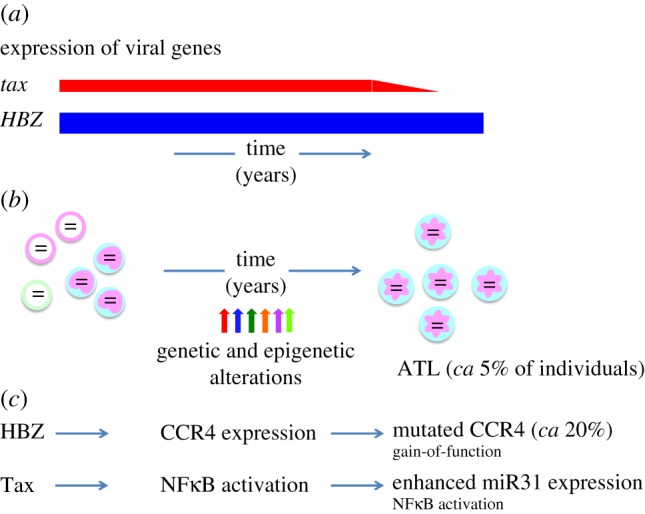Figure 4.

Leukaemogenesis by viral genes, genetic and epigenetic alterations. About 5% of HTLV-1-infected individuals develop ATL after a long latent period. (a) Tax and HBZ play critical roles in leukaemogenesis by HTLV-1. HBZ is constantly expressed while the tax gene is sporadically transcribed. Tax and HBZ modulate the immunophenotype of ATL cells, inhibit apoptosis and promote proliferation. HBZ is expressed in all ATL cases while tax is not expressed in approximately half of ATL cases. (b) Subsequent genetic and epigenetic alterations that accumulate during the long lifetime of the infected clone fix or potentiate these phenotypic and functional changes. (c) For example, HBZ induces CCR4 expression, which leads to increased migration and proliferation of infected cells. Gain-of-function mutations of CCR4 were found in approximately 20% of ATL cases. Similarly, Tax strongly activates NFκB. Increased miR31 expression leads to NFκB activation in the absence of Tax.
